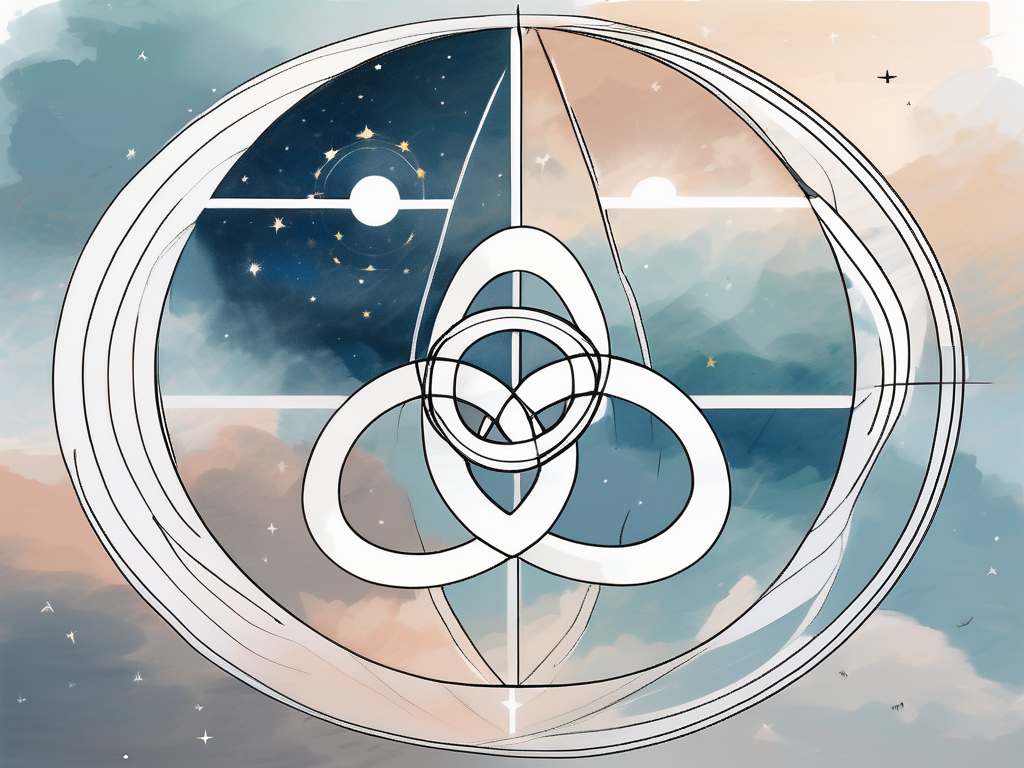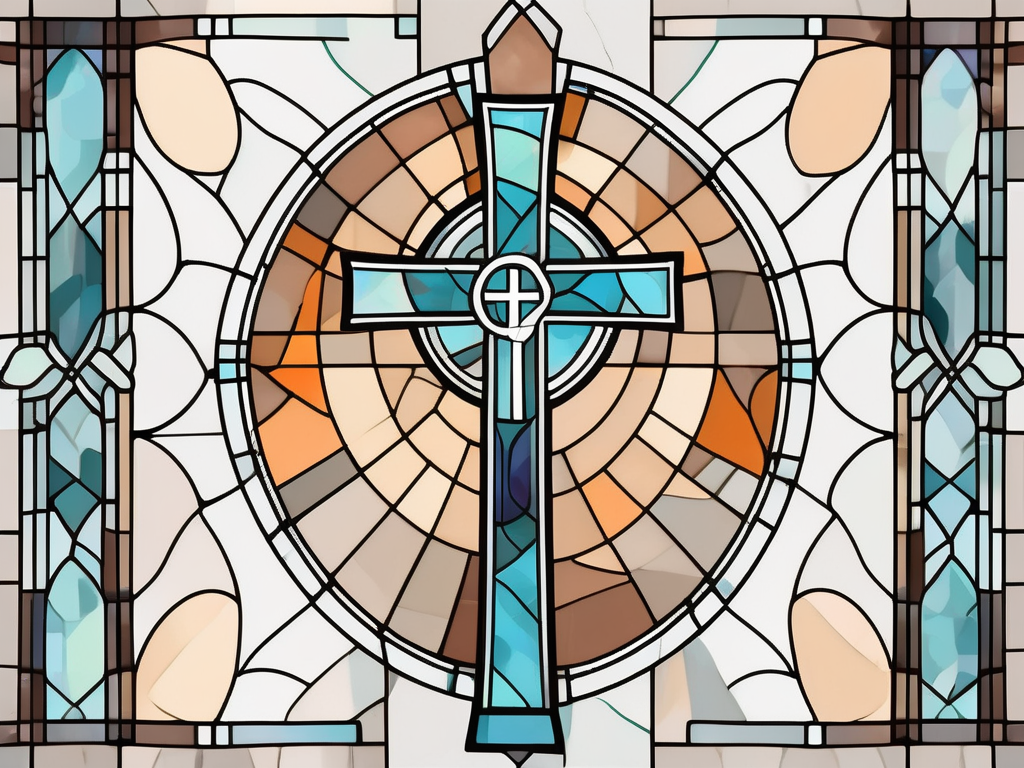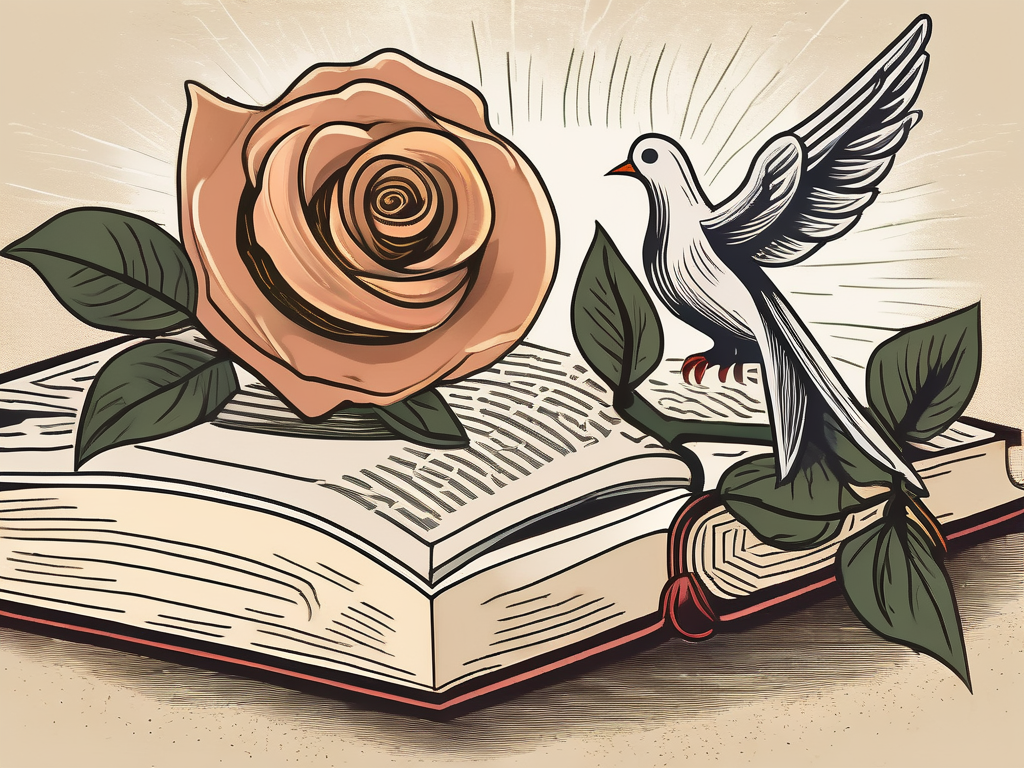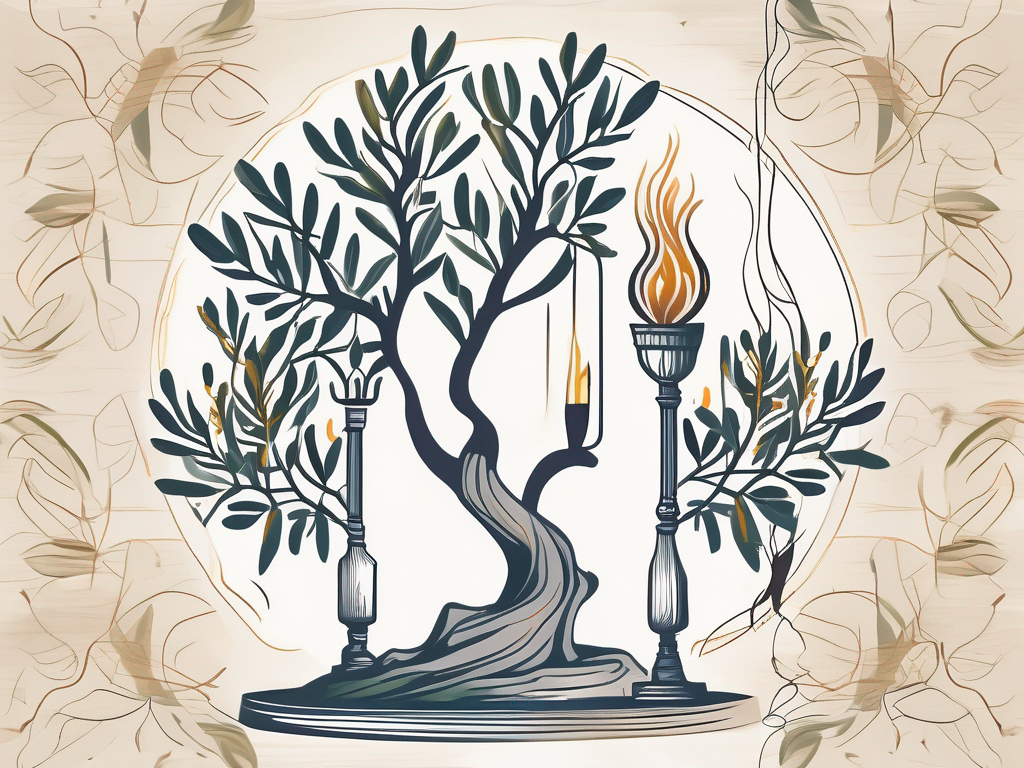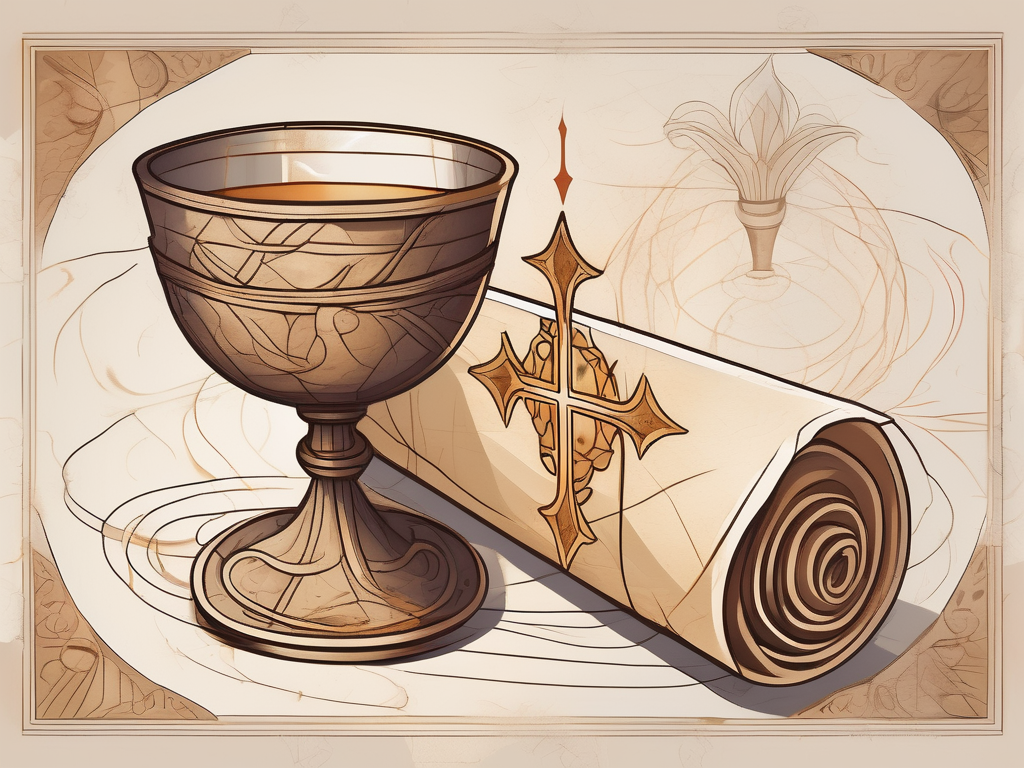Catholics have a deep and rich devotion to Mary, the mother of Jesus. Within Catholicism, she holds a unique and revered position. Understanding the role of Mary in Catholicism helps shed light on the beliefs and practices surrounding her. Let’s delve into the various aspects of Mary’s significance in the Catholic faith.
Understanding the Role of Mary in Catholicism
One of the fundamental beliefs about Mary in Catholicism is her place in the Holy Trinity. While Catholics believe in the Holy Trinity of God the Father, God the Son (Jesus), and God the Holy Spirit, Mary is not considered a part of the Trinity itself. Rather, she is seen as an essential intercessor and an avenue through which God’s grace flows.
Throughout history, Mary has been revered as a powerful intercessor, someone who can bring the prayers of the faithful to God. Catholics believe that Mary’s close relationship with Jesus gives her a unique ability to intercede on behalf of humanity. This belief is deeply rooted in the biblical account of the wedding at Cana, where Mary, upon realizing that the wedding feast had run out of wine, approached Jesus and asked him to perform his first miracle. Jesus, in turn, honored his mother’s request and turned water into wine, demonstrating the special role that Mary plays in bringing the needs of the faithful to Jesus.
Another pivotal belief is that of the Immaculate Conception, which refers to Mary’s sinless birth. The Catholic Church teaches that Mary was conceived without original sin, making her uniquely worthy to bear the Son of God. This belief is based on the understanding that if Mary were to carry the Son of God in her womb, she had to be free from the stain of original sin. This immaculate conception sets Mary apart from all other human beings and highlights her purity and holiness.
Furthermore, the perpetual virginity of Mary is a core doctrine within Catholicism. Catholics believe that Mary remained a virgin before, during, and after giving birth to Jesus. This teaching emphasizes Mary’s spiritual purity and her full dedication to serving God’s plan. The belief in Mary’s perpetual virginity is supported by biblical references, such as the Gospel of Matthew, which states that Joseph had no sexual relations with Mary until after she gave birth to Jesus. This understanding of Mary’s perpetual virginity is also seen as a sign of her complete consecration to God.
In addition to her role as an intercessor and her sinless birth, Mary is also venerated for her unwavering faith and obedience to God. Catholics see Mary as the perfect example of faith, as she willingly accepted God’s plan for her life, even though it meant facing challenges and uncertainties. Mary’s “yes” to God, known as the Annunciation, is seen as a model of surrender and trust in divine providence.
Moreover, Mary’s significance extends beyond her earthly life. Catholics believe in the Assumption of Mary, which teaches that at the end of her earthly life, Mary was taken up, body and soul, into heaven. This belief underscores Mary’s special role in salvation history and her close union with her Son, Jesus. The Assumption of Mary is celebrated as a major feast day in the Catholic Church, highlighting the honor and glory bestowed upon her by God.
In conclusion, Mary holds a central and revered position in Catholicism. She is seen as an intercessor, a sinless vessel, a perpetual virgin, a model of faith, and one who has been assumed into heaven. Through her unique role, Mary continues to inspire and guide Catholics in their spiritual journey, reminding them of the importance of faith, purity, and complete surrender to God’s will.
The Four Marian Dogmas
The Catholic Church has officially defined certain beliefs about Mary through the declaration of dogmas. These dogmas provide a framework for understanding her role and importance within Catholic theology.
Let us delve deeper into each of the four Marian dogmas and explore their significance in the Catholic faith.
Mother of God: Theotokos
The title “Mother of God” holds great significance in Catholicism. The doctrine of Theotokos affirms that Mary is not merely the mother of Jesus’ human nature but also of His divine nature. This title emphasizes the divine nature of Jesus and serves as a reminder of Mary’s unique role as the mother of the Son of God.
Throughout history, theologians and scholars have contemplated the profound mystery of Mary’s role as the Mother of God. The title Theotokos encapsulates the belief that Mary played an integral part in the Incarnation, the moment when the Word became flesh. By accepting her role as the Mother of God, Mary demonstrated her unwavering faith and willingness to cooperate with God’s plan for the salvation of humanity.
Assumption of Mary: Ascension to Heaven
The Assumption of Mary refers to the belief that, at the end of her earthly life, Mary was taken up, body and soul, into heaven by God’s power. This dogma, declared in 1950, reflects the Catholic belief in Mary’s special place in God’s plan and her reward for her unparalleled faithfulness.
The Assumption of Mary holds a special place in the hearts of Catholics worldwide. It signifies the culmination of Mary’s earthly journey and her ultimate union with God. This dogma also serves as a source of hope for believers, reminding them of the promise of eternal life and the possibility of being united with God in body and soul.
Immaculate Conception: Freedom from Original Sin
The dogma of the Immaculate Conception declares that Mary was preserved from the stain of original sin from the moment of her conception. This belief highlights Mary’s unique holiness and her readiness to be the vessel through which God would enter the world.
The Immaculate Conception is a profound mystery that reveals the depth of God’s love and mercy. By preserving Mary from original sin, God prepared her to be the perfect dwelling place for His Son. This dogma also emphasizes the importance of purity and holiness in the life of a believer, inspiring Catholics to strive for moral excellence and a closer relationship with God.
Perpetual Virginity: Mary’s Lifelong Purity
The doctrine of Mary’s perpetual virginity asserts that she remained a virgin throughout her life, before, during, and after the birth of Jesus. This teaching underscores Mary’s total dedication to God and purity of heart.
Mary’s perpetual virginity is a testament to her unparalleled devotion to God and her unwavering commitment to fulfilling His will. By remaining a virgin, Mary consecrated her entire being to God’s service, embodying the ideal of purity and selflessness. This dogma also serves as a reminder of the sacredness of human sexuality and the importance of chastity in the Christian life.
These four Marian dogmas form an essential part of Catholic theology, providing believers with a deeper understanding of Mary’s role in salvation history and her significance as a model of faith and devotion. As Catholics reflect on these dogmas, they are encouraged to emulate Mary’s virtues and seek her intercession, knowing that she is a powerful advocate and a loving mother to all.
Mary’s Intercessory Role in Catholicism
Within Catholicism, Mary is honored as an intercessor, someone who can bring the prayers and concerns of believers to God. This belief is rooted in the Catholic understanding of Mary as a powerful advocate who can pray on behalf of humanity.
Throughout history, Mary has been revered as a compassionate and loving figure, always ready to listen to the pleas of those who turn to her. Catholics believe that she has a special closeness to God, being the mother of Jesus, and that she can use this closeness to intercede for the needs of humanity.
Mary’s intercessory role is not only seen as a privilege, but also as a responsibility. Catholics believe that she actively listens to the prayers of the faithful and presents them to God with her own supplications. This belief in Mary’s intercessory power gives comfort and hope to many believers, knowing that their prayers are being heard by a loving mother figure.
Mary as the Mediatrix
One aspect of Mary’s intercessory role is her title as the Mediatrix. Catholics believe that Mary is a bridge connecting humanity to Jesus, the ultimate mediator between God and humanity. Through her intercession, Mary plays a crucial role in bringing people closer to God’s mercy and grace.
The title of Mediatrix emphasizes Mary’s unique role in salvation history. Just as she played a pivotal role in the Incarnation by saying “yes” to God’s plan, Catholics believe that she continues to play a significant role in the spiritual journey of believers. Mary’s intercession is seen as a powerful means to obtain God’s blessings and to receive the grace necessary for spiritual growth.
Furthermore, Catholics see Mary as a model of faith and obedience. By imitating her virtues and seeking her intercession, believers hope to deepen their relationship with God and grow in holiness.
The Power of Marian Prayers
Catholics hold a deep belief in the power of prayers addressed to Mary. Devotional prayers such as the Hail Mary and the Memorare are commonly recited, seeking Mary’s intercession. These prayers express love, gratitude, and asking for her guidance and protection.
When Catholics pray to Mary, they are not worshiping her, but rather asking for her help and support. Just as one might ask a friend or family member for prayers during difficult times, Catholics turn to Mary as a trusted intercessor who can bring their petitions to God.
Many believers have shared stories of answered prayers and miracles attributed to Mary’s intercession. These personal experiences strengthen the faith of Catholics and reinforce their trust in Mary’s role as an advocate and helper.
The Rosary: A Devotion to Mary
The Rosary holds a special place in Catholic devotion to Mary. It is a prayerful meditation on the life, death, and resurrection of Jesus. In this devotion, Catholics contemplate the mysteries of Christ while seeking Mary’s intercession as they recite the Hail Mary and other prayers.
The Rosary is a powerful tool for deepening one’s relationship with God and Mary. It provides a structured and reflective way to meditate on the key moments of Jesus’ life, inviting believers to enter into the mysteries of salvation.
As Catholics recite the prayers of the Rosary, they often focus on specific intentions or concerns, asking Mary to intercede for them. This practice of combining prayer and meditation helps believers to connect with the divine and seek guidance and strength from Mary as they navigate the challenges of life.
Throughout the centuries, the Rosary has been a source of comfort and solace for countless individuals. It is a tangible expression of devotion to Mary and a means to draw closer to her intercessory role in Catholicism.
The Veneration of Mary in Catholic Tradition
A significant aspect of Catholic devotion to Mary is the veneration bestowed upon her. This veneration manifests itself through various customs, traditions, and artistic expressions.
Throughout history, there have been reported apparitions of Mary to individuals, groups, and even whole communities. These apparitions are seen by Catholics as occasions when Mary intervenes in human affairs with messages of love, repentance, and hope. These miraculous encounters have captivated the faithful and have become an integral part of Catholic tradition. People from all walks of life have claimed to witness Mary’s presence, and these accounts have inspired devotion and deepened the faith of believers.
Mary’s role in Catholicism is not only experienced through apparitions, but also depicted through countless works of art and iconography. Paintings, sculptures, and stained glass windows portray her as a symbol of faith, motherly love, and divine grace. These artistic representations not only serve as visual reminders of Mary’s importance, but also inspire contemplation and devotion. Each brushstroke and chisel mark captures the essence of Mary’s character, inviting the viewer to reflect on her virtues and seek her intercession.
Catholics commemorate various feast days and celebrations dedicated to Mary throughout the liturgical year. The most prominent of these include the Feast of the Annunciation, the Feast of the Immaculate Conception, and the Feast of the Assumption. These celebrations serve to honor and express gratitude for Mary’s pivotal role in salvation history. They provide an opportunity for the faithful to gather in prayer and thanksgiving, reflecting on Mary’s obedience to God’s will and her unwavering faith.
But Mary’s significance in Catholic tradition goes beyond mere celebrations and artistic representations. She holds a unique place in the Holy Trinity as the Mother of God. This belief, known as the dogma of the Divine Maternity, affirms that Mary gave birth to Jesus Christ, who is both fully human and fully divine. This profound mystery highlights Mary’s role as the vessel through which God entered the world, bringing salvation to humanity. The Catholic Church holds this dogma as a central tenet of faith, emphasizing Mary’s unparalleled closeness to God and her intercessory power.
In conclusion, the role of Mary in Catholicism is multi-faceted and deeply rooted in the faith. From her unique place in the Holy Trinity to the dogmas surrounding her, Catholics honor, reverence, and turn to Mary as a powerful intercessor. Through prayers, devotions, and artistic expressions, the Catholic Church cherishes Mary as a model of faith, purity, and the embodiment of God’s graces. The veneration bestowed upon Mary is not just a superficial act, but a profound expression of love and devotion that continues to inspire and uplift the faithful.

